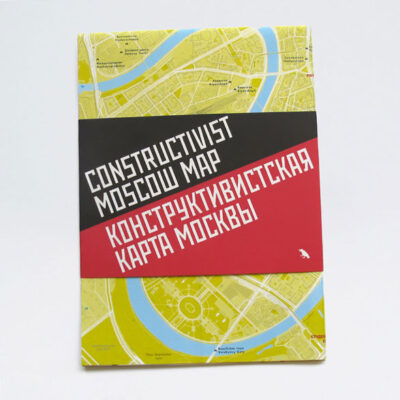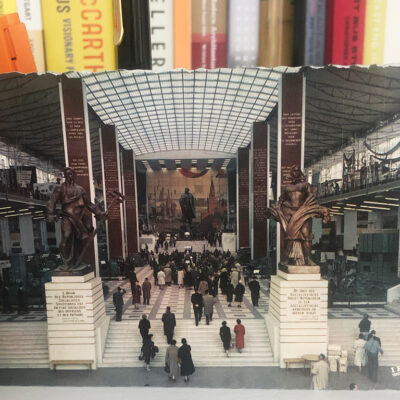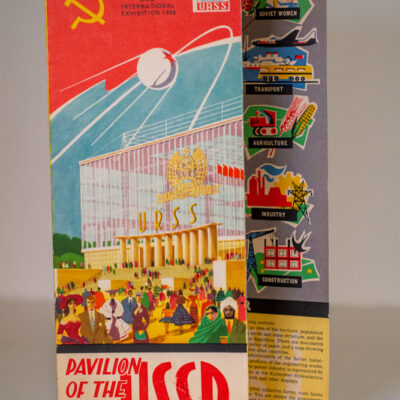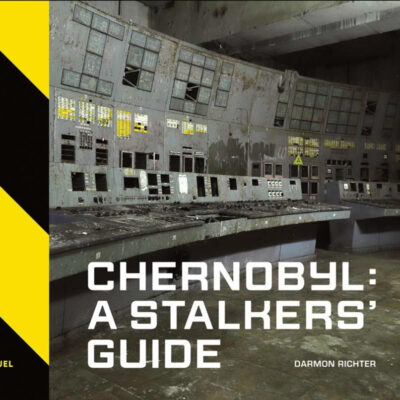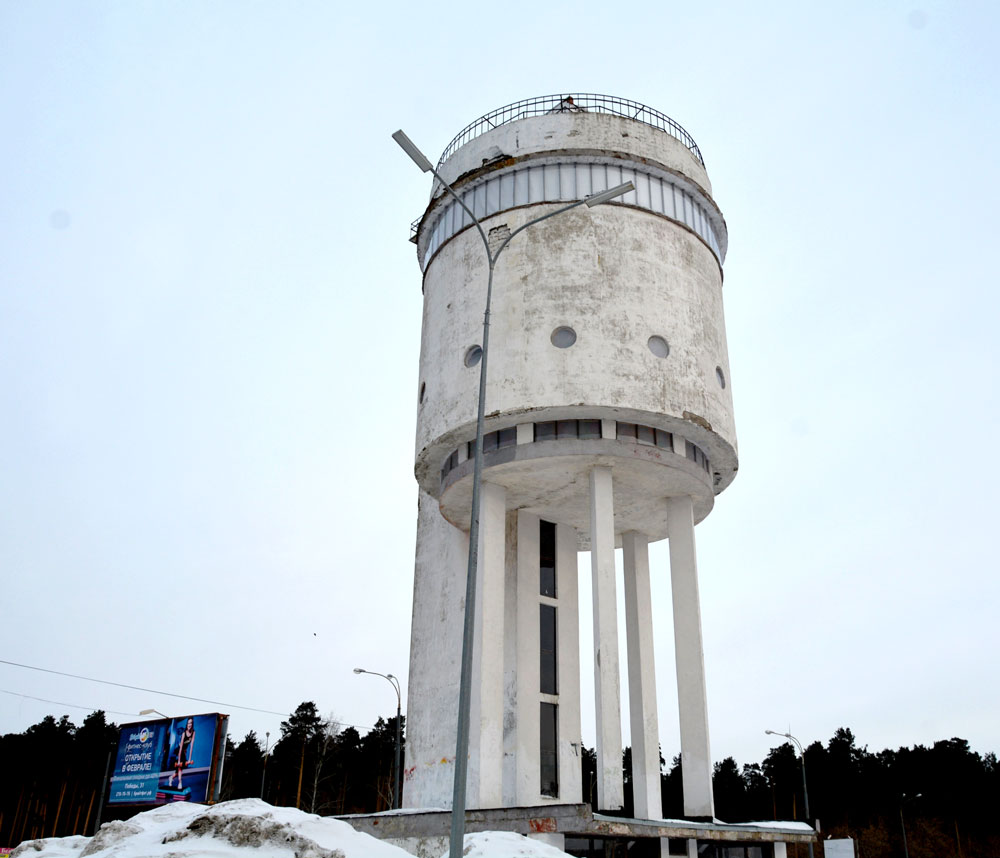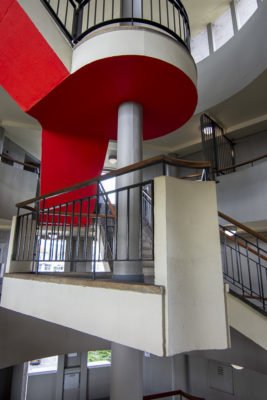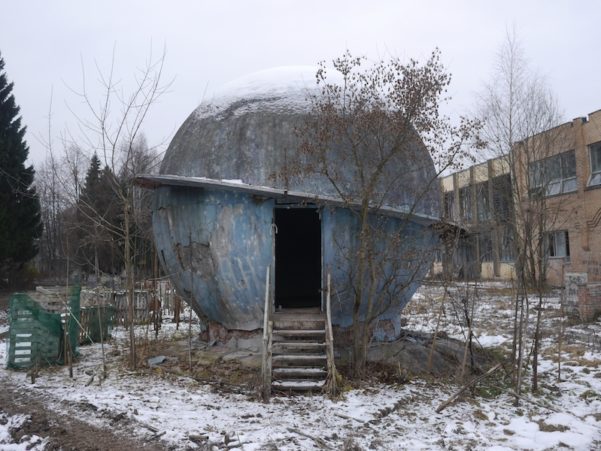The Constructivist Project
For 20 years following the October 1917 Revolution, the new USSR saw the flowering of the Constructivist movement. Greyscape talks to Natalia Melikova, activist, advocate, photographer and leader of the project to save these mighty, vulnerable buildings.
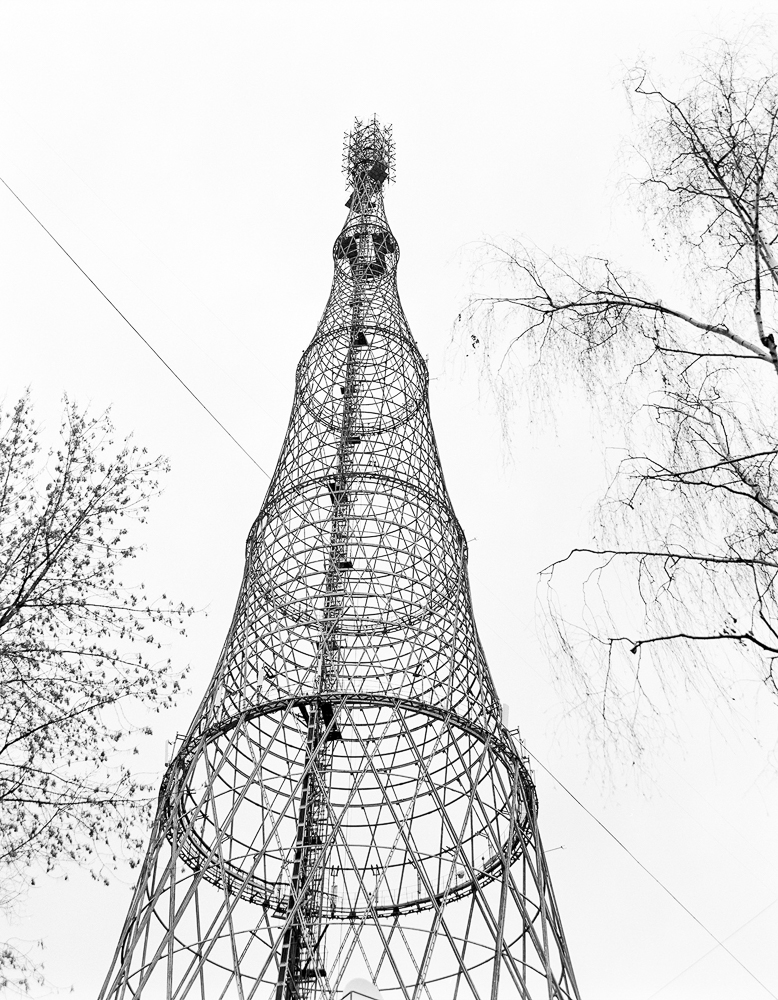
The 160 metre high Shukhov Tower aka Shabolovka Tower designed by Vladimir Shukhov and built during the Russian Civil War ©Natalia Melikova The Constructivist Project
Constructivism adopted modern technology for its determinedly Communistic social purposes, today they need preservation, saving.
Greyscape regularly enthuses about the Soviet Avante-Garde in architecture and art; the rapid emergence in the Bolshevik Revolution of radical new ideas in design. But Constructivism flourished for a only a relatively short time before totalitarianism gripped and stifled the arts and design. Large numbers of the greatest designers of the twentieth century were forced from their posts or compelled to work in the Soviet Imperialist style. Many were purged, imprisoned or exiled to Siberia or executed. Some managed to flee abroad. Now, the legacy of their amazing work survives only in parts. Much of what remains is in danger of destruction through neglect, often deliberate. Natalia Melikova is the founder of The Constructivist Project. She’s a passionate campaigner and activist working tirelessly to protect and preserve that precious legacy. Natalia’s photography captures the haunting beauty of the buildings and shows the challenge she and her supporters face.
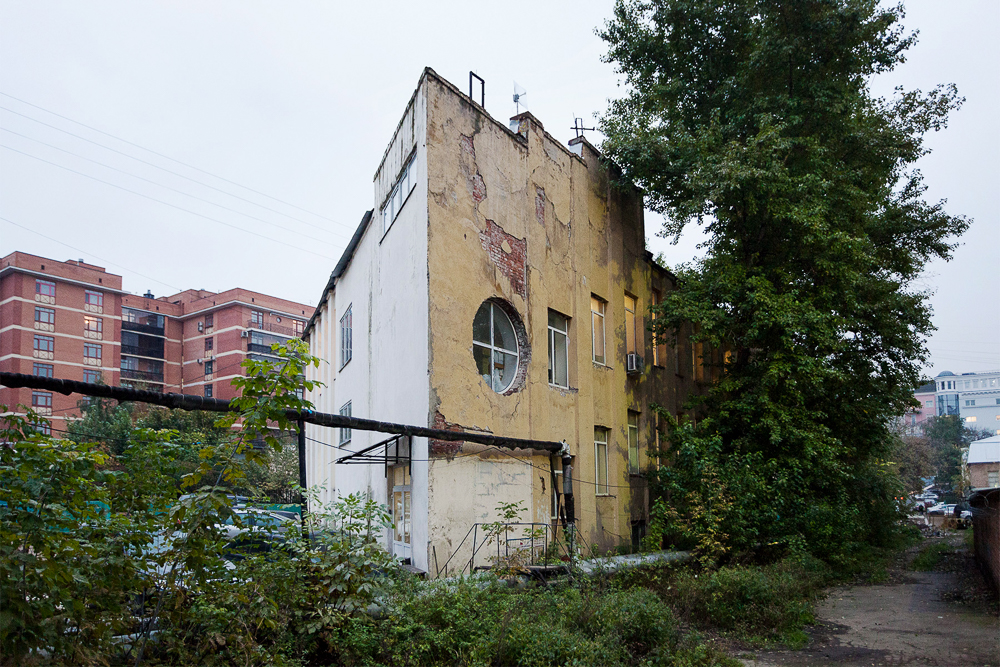
Office, Novoukharevskiy Market ©Natalia Melikova The Constructionist Project
Natalia was born in Moscow moving to California in 1991 when she was only seven. Graduating with a BA degree in International Studies from the University of California, San Diego (2007), and a Masters in Photography from the Academy of Art University (2012). She moved back to Moscow in 2012. Here Natalia answers Greyscape’s questions and has given us a taster of her evocative photography. She’s made this important cause her life. You’ll be as impressed by her commitment as are we.
What took you to Constructivism?
I discovered constructivism through the photographs of Alexander Rodchenko. I had started the Masters programme in photography at the Academy of Art University in San Francisco (2009). We had an assignment to copy the work of a master photographer. Out of the list of photographers, the Russian last name Rodchenko caught my eye. I didn’t have a background in art or in architecture so a quick google search opened up a new world for me. Not only was I impressed by Rodchenko’s strong compositions and dynamic perspectives, but it was in his photographs that I spotted my first Constructivist architecture: the Shukhov Tower, the Mosselprom Building, the Izvestia Newspaper Plant. Let’s just say that was enough to trigger my curiosity. I spent a lot of time looking up what I could find about the Constructivist movement. Here I am a decade later continuing that work.
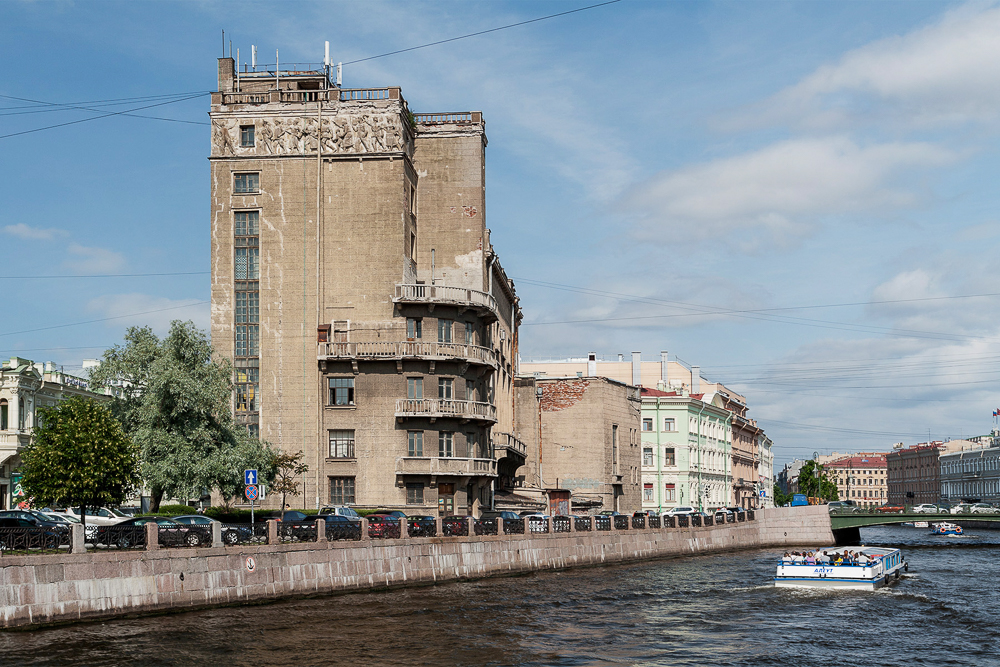
Student Commune House, Moscow, ©Natalia Melikova The Constructionist Project
And why did you choose photography as your medium?
I took snapshots on my travel-friendly Canon PowerShot ELPH in Moscow and then Madrid and got so much joy from it. It was a way to explore and document new places and share with friends back home.
Born in Moscow, I had lived in California since I was seven. So my time in Moscow on a study abroad program undoubtedly had an impact on me. The city and culture seemed overwhelmingly new, only faintly familiar. When I graduated from university, I was in my early twenties and had no idea what I wanted to do with my life. So at that time it seemed logical to move to Moscow for a year ‘to figure things out’, so to speak. During that year I upgraded to a Canon 400D. I continued exploring the city through the lens of my camera. Coming back to California, I knew I wanted to pursue photography professionally and enrolled at the Academy of Art University.
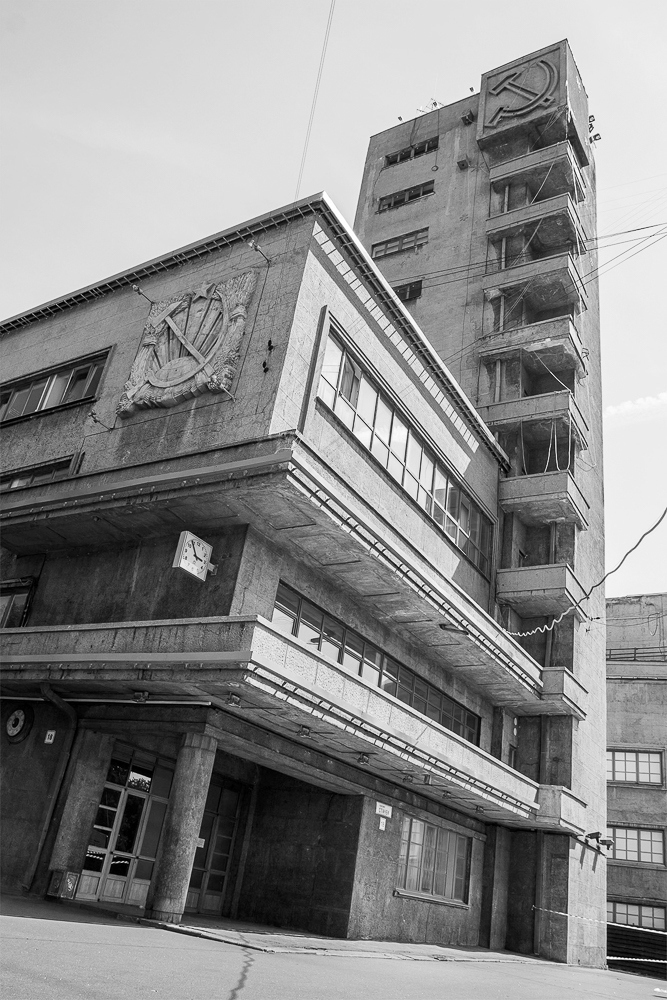
The 11 storey Kirov District Council Building in St. Petersburg ©Natalia Melikova The Constructivist Project
Why did you move to Moscow?
Short answer: The Constructivist Project. I chose documenting avant-garde architecture as the subject of my thesis work at AAU. I spent several months in Moscow photographing avant-garde buildings. Getting to know not only the buildings, their condition and public and the architectural community’s attitudes toward them. Using my photographs, I created silk screen posters inspired by constructivist graphic design to bring attention to these monuments.
After showing this work, titled The Constructivist Project, in San Francisco, I thought the next logical step would be to exhibit it in Moscow. I had no idea how long it might take to arrange an exhibition, so I bought a one-way ticket. Back in Moscow, I continued my research and attended lectures and events related to the avant-garde.
I had the good fortune of meeting Alexandra Selivanova, at the time the director of the Avant-Garde Center at the Jewish Museum (currently she is the director of the Avant-Garde Center at the Na Shabolovke Gallery). She helped to arrange an exhibit at the Jewish Museum in 2013, but by then I had discovered that I had unwittingly already moved to Moscow, and I’ve been here for eight years now.
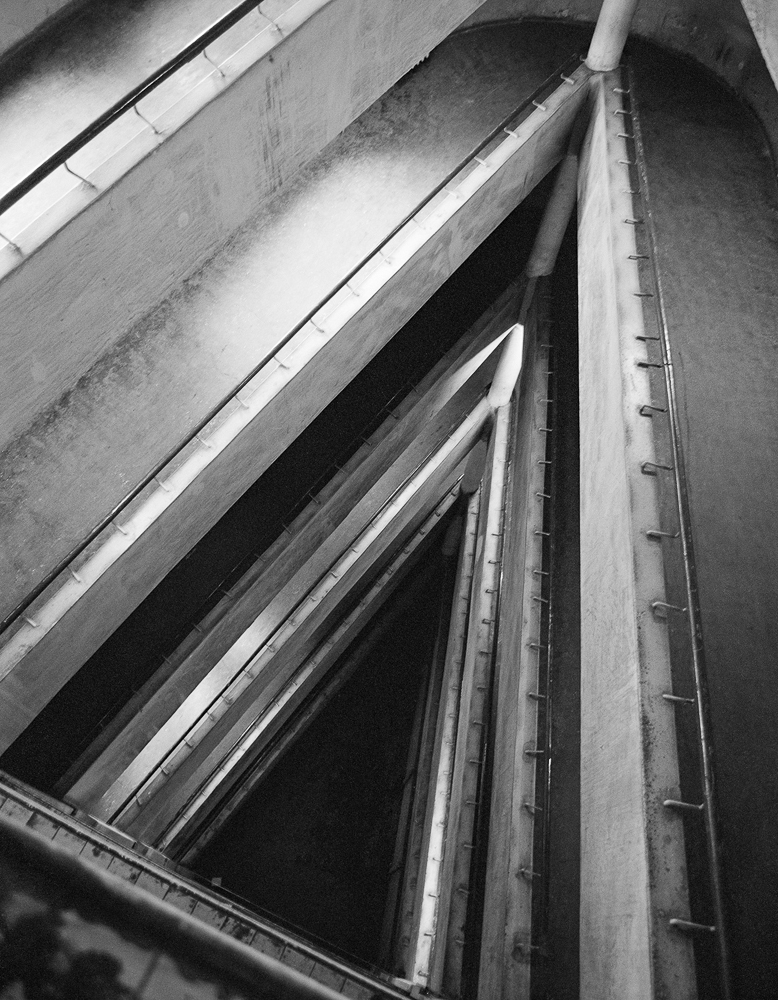
Moscow, Student Commune House ©Natalia Melikova The Constructivist Project
In what condition are Russia’s Constructivist buildings?
On the whole not so good, especially when compared to European standards and practice. Moscow boasts thousands of monuments, and, as the capital, has substantial financial resources but doesn’t spend enough on restoration work. Instead there are aggressive new developments threatening all styles of historical architecture and disrupting the historical fabric of Moscow. The work of Archnadzor, a non-governmental heritage preservation movement, has been crucial in drawing attention and strategically addressing these issues. I think the situation with Constructivist and Modernist architecture, in particular, is worse due to their under-appreciation. There’s a lack of willingness to maintain these buildings or invest in renovating and adapting them for contemporary use.
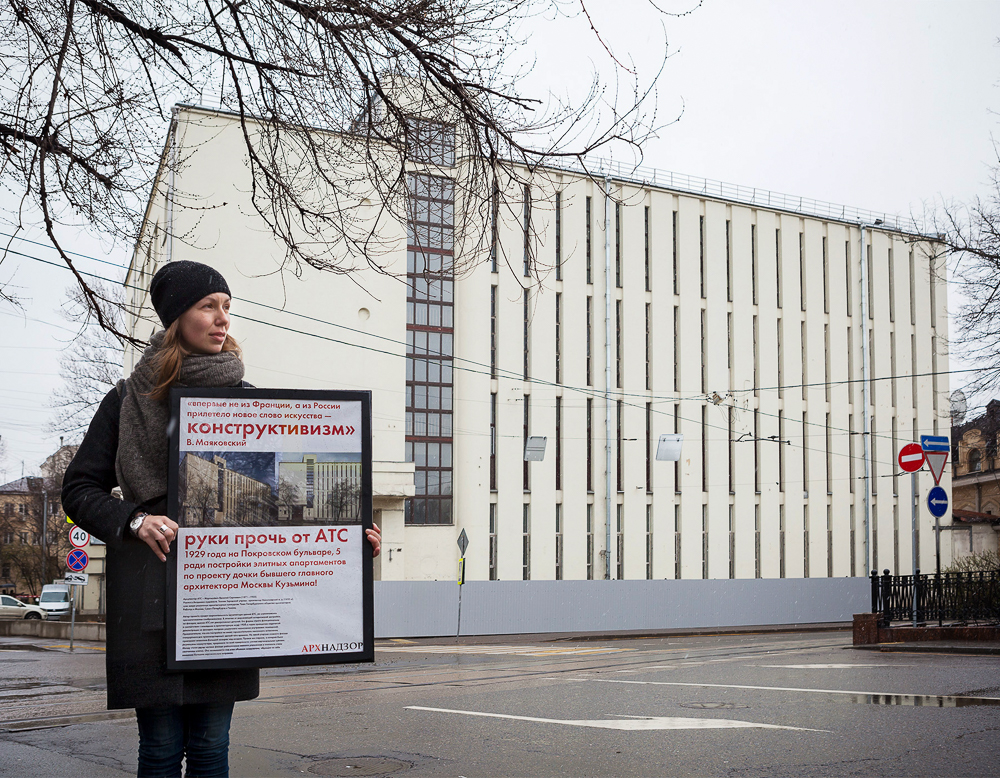
A member of Archnadzor campaigning for the preservation of the Taganskaya Telephone Station, Moscow, 2016 ©Natalia Melikova The Constructivist Project
How do Russians and Russian authorities see their Constructivist legacy?
Almost a decade ago, when I had just started The Constructivist Project and first began to learn about the Constructivist movement, one did not get the impression that it was even remotely well-known by the general public. Constructivist architecture was openly disliked by government officials including those in charge of protecting cultural heritage. Fast forward to the present day, and Constructivism has become more recognisable and popular in many ways as evidenced by the increase in the number of exhibits and other events related to the avant-garde, souvenirs and other goods featuring avant-garde themes.
Even Moscow in its 870th anniversary celebrations in 2017 (an event organised by the government) was decked out in Constructivist-inspired designs. It showed off monuments of Constructivist architecture in its promotional campaign. Despite this positive recognition of Constructivism when it comes to the architectural legacy of the avant-garde, it still faces many of the same obstacles as it did before, it’s just now more well-known.
Tell us about some of your favourite buildings?
My three favourite buildings are also the ones I’ve been the most involved in campaigning for their preservation: the Shukhov Tower, the Melnikov House, and Narkomfin.
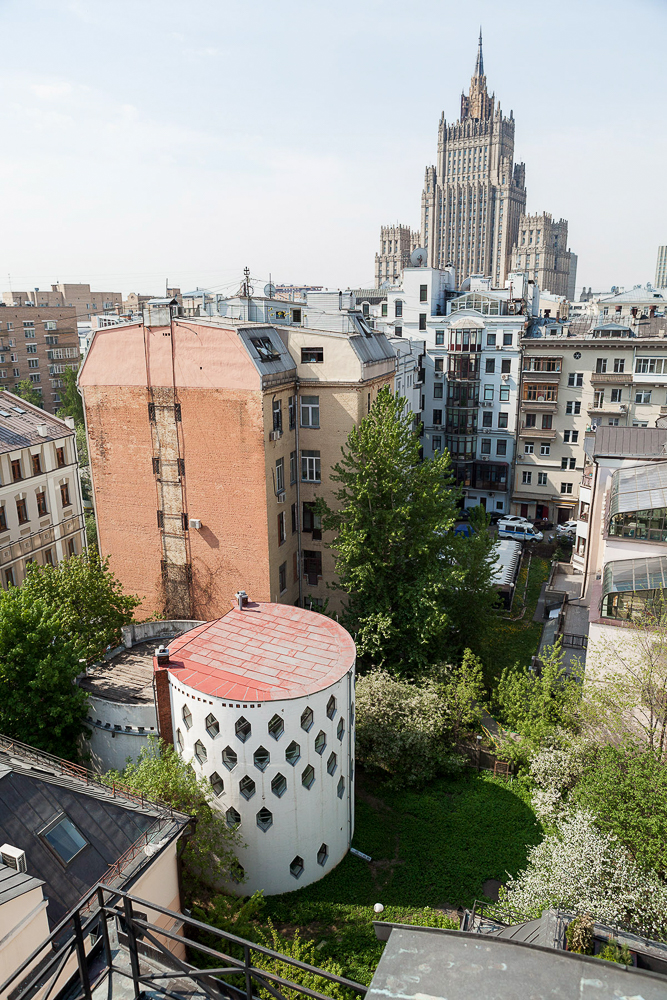
Konstantin Melnikov’s famous house in Moscow, composed of two cylinders, shown beautifully in this photograph ©Natalia Melikova The Constructivist Project
Perhaps it’s because when I first got into all this, I found their situations the most bizarre: they were world-famous monuments and yet they were all but ignored in Moscow. Since then, the Shukhov Tower was almost demolished in 2014 and unfortunately it seems there’s no progress in getting closer to a restoration – it’s now a monument of sorts to the problems of cultural preservation in Moscow. The Melnikov House has finally become a museum, although how this came about, also in 2014, caused a lot of controversy.
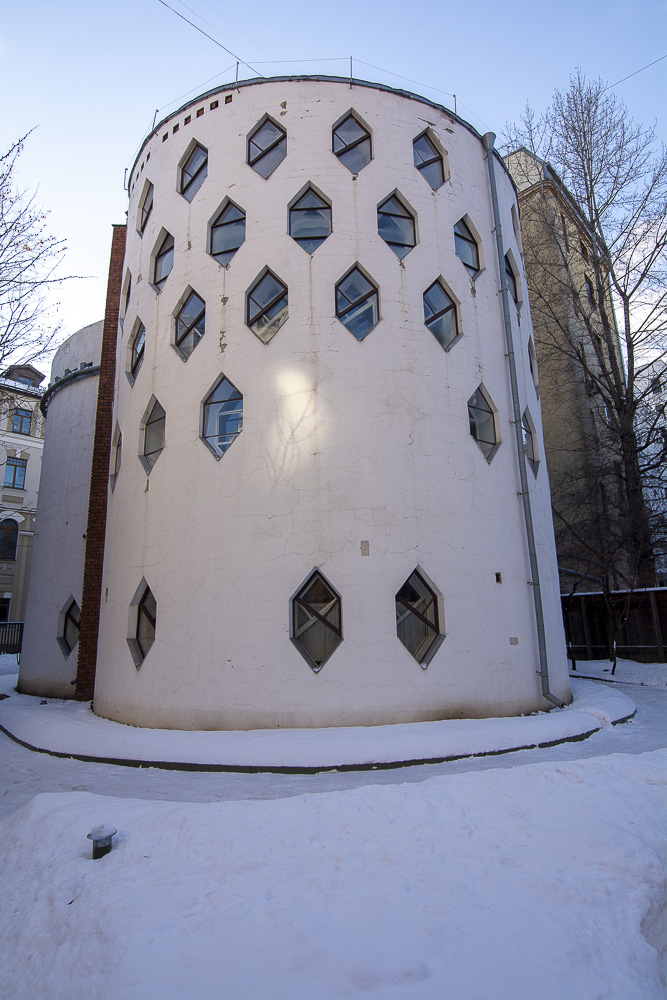
The Melnikov House designed by Konstantin Melnikov ©Greyscape
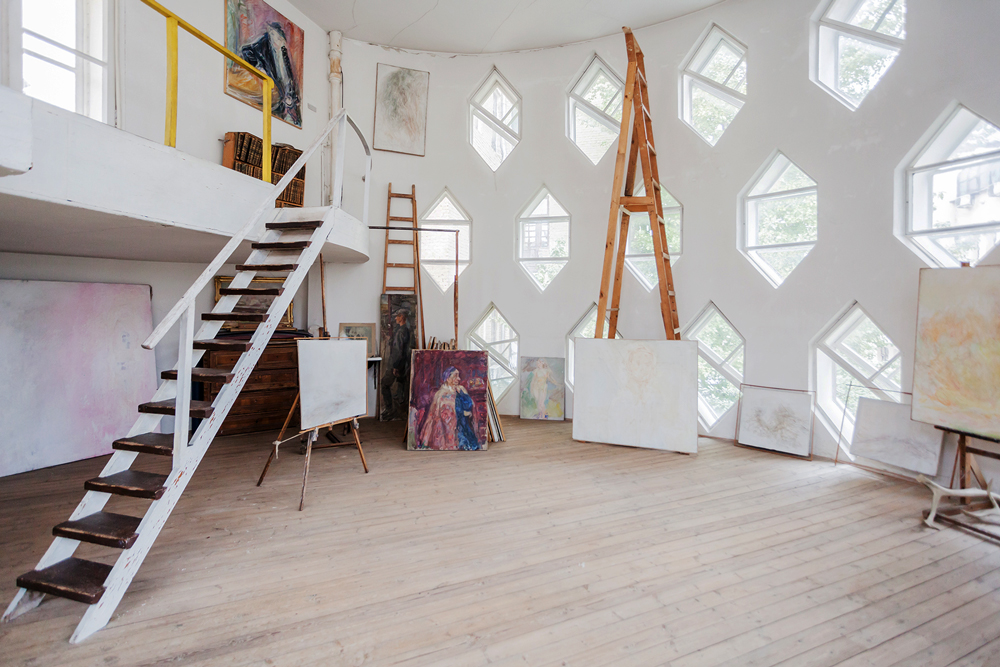
Studio on the upper floor of the Melnikov House ©Natalia Melikova
And for the last three years, Narkomfin has been under a long-awaited restoration and soon will start a new chapter of its life. It will be interesting to see what kind of precedent it sets. How it will be received in the cultural life of Moscow after being ‘abandoned’ for so long.
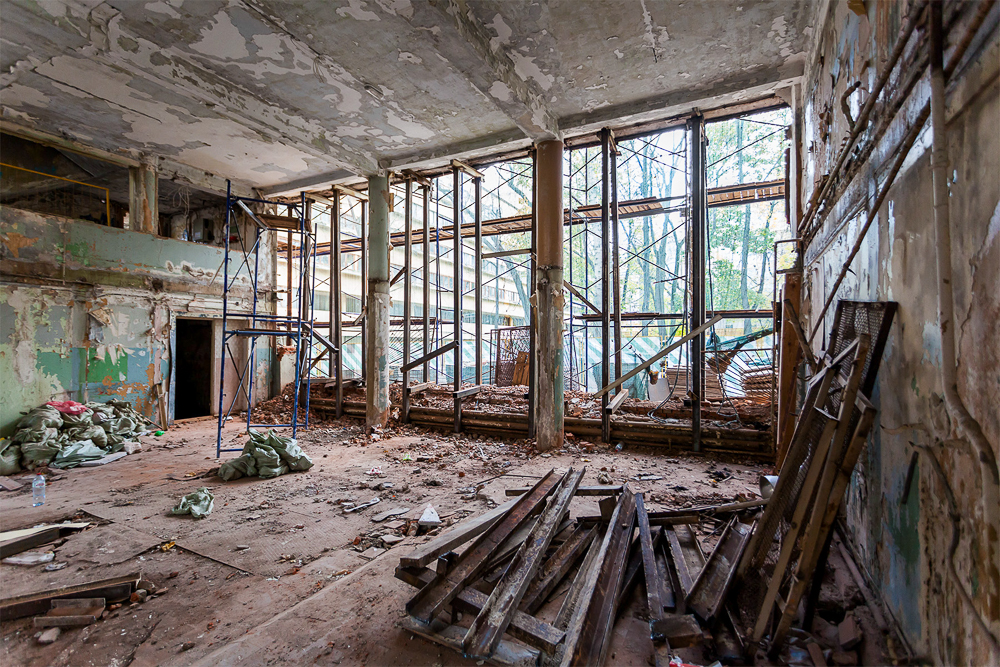
Moisei Ginzburg’s Constructivist masterpiece to house all the workers in the Soviet Finance Ministry, the Narkomfin Building, awaiting restoration ©Natalia Melikova The Constructivist Project
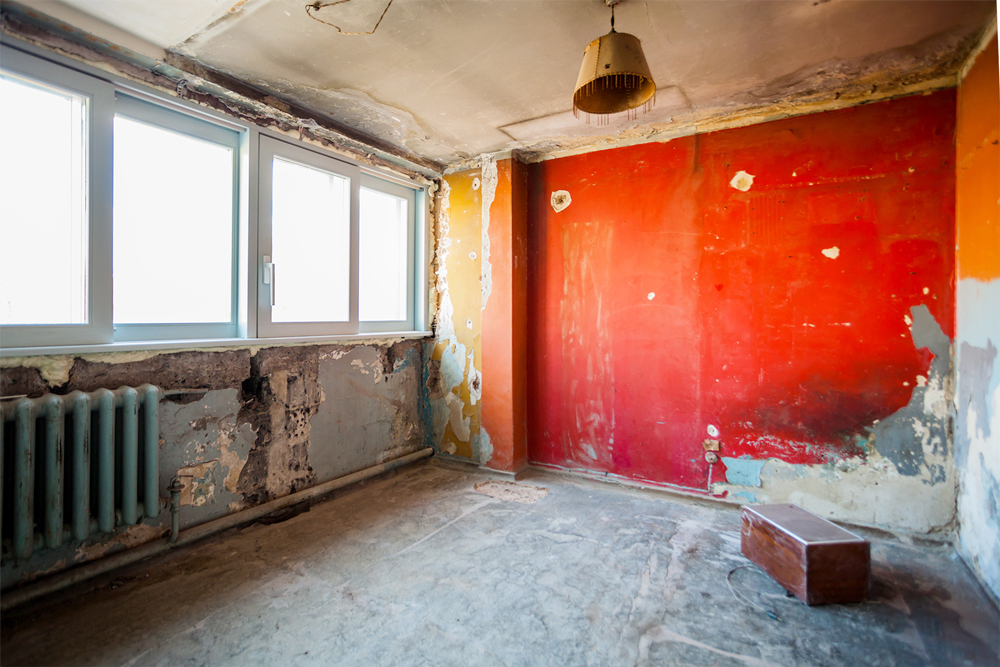
Interior of an apartment in the Narkomfin building during restoration in 2017 ©Natalia Melikova
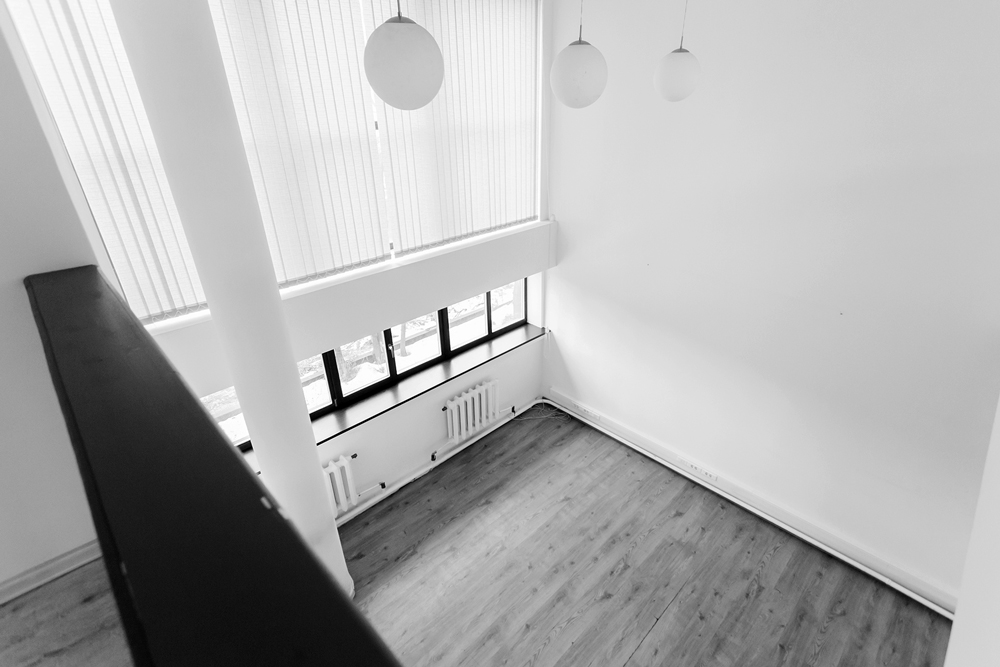
Interior of a Narkomfin apartment towards the end of restoration work ©Natalia Melikova
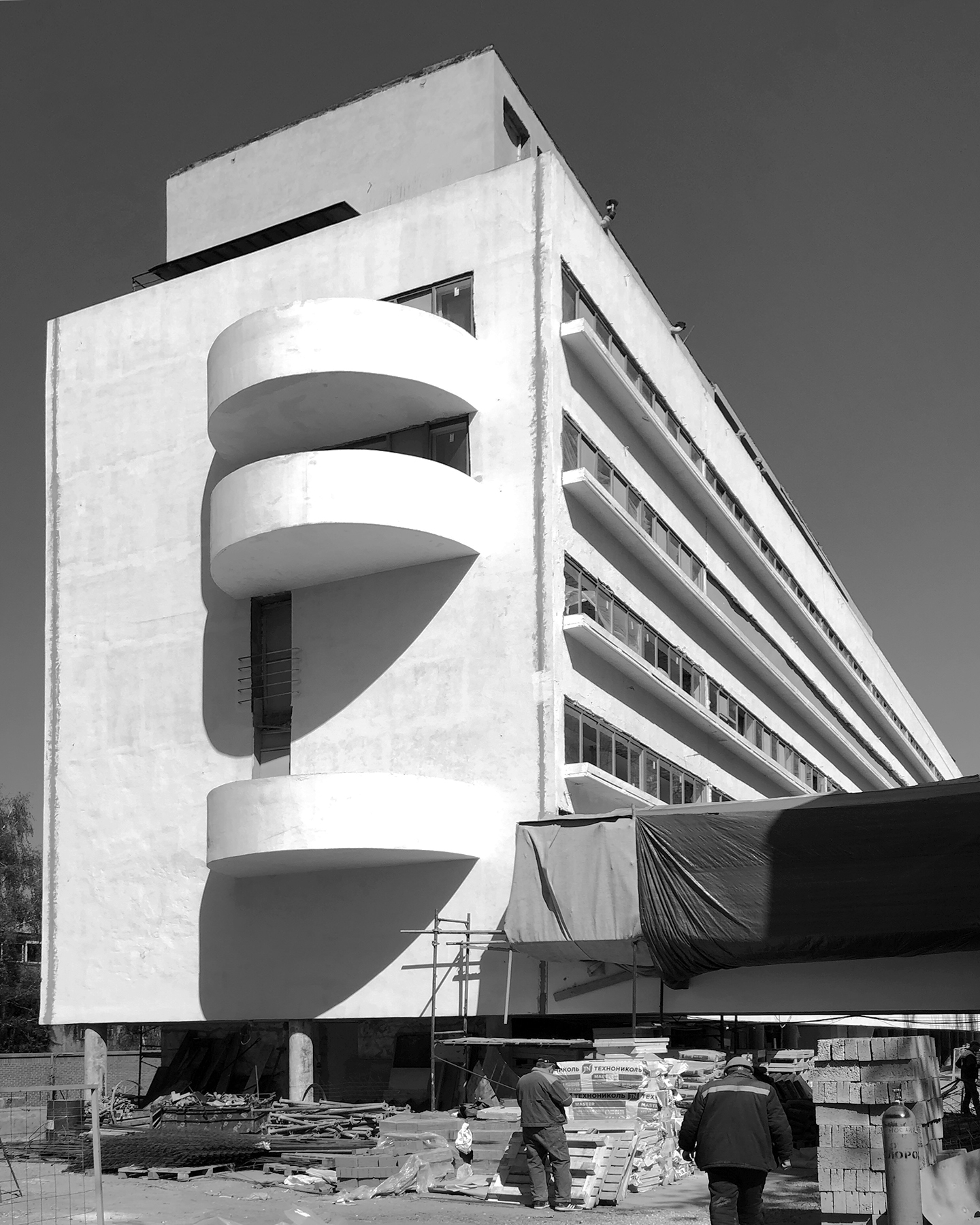
The Narkomfin building in 2019 towards the end of the restoration works ©Natalia Melikova
What are you aiming for in the next couple of years?
I plan to continue working on theconstructivistproject.com website, making improvements, posting more content, and taking more photos of course. I would also like to secure some sort of funding for the project. Right now it’s 100% fueled by volunteers and pure enthusiasm, which while a noble effort, makes it hard to realise certain aspects, such as website maintenance or launching an app with an offline map (a request I hear often).
Tell us about your website
The new version of the website was launched in April 2017. The most important part is the online map and database of architectural heritage from the 1920s-1930s that was done in partnership with the Avant-Garde Center and a group of volunteers. Currently there are nearly 3,000 sites on the map. The website also has a news archive, a library, a calendar of events, and a magazine section.
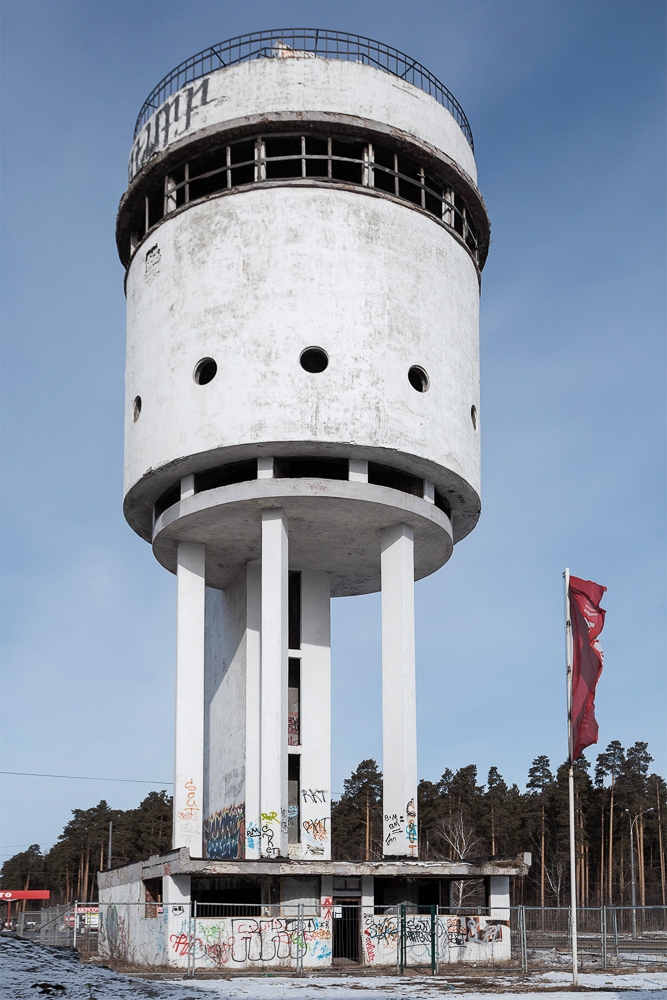
The White Tower, Ekaterinburg a masterpiece of Constructivist design built in 1931 by Moisei Reischer ©Natalia Melikova The Constructivist Project
What do you like best about living in Moscow and what are the greatest challenges?
I like that there’s always something going on in Moscow: exhibits, lecture programs, festivals, and so on, and on such a wide variety of topics. The transportation system is also really convenient. Coming from California that so heavily relies on the use of cars, it’s liberating to have the Moscow metro that goes just about everywhere efficiently and cheap (there are over 200 stations and counting as new stations are opened every year, and costs just around 60 US cents).
The world-renowned architecture of the stations is an additional bonus.
As for challenges, top of my list would be the weather. Cold weather and not enough sunshine during the winter months is a sure downer. And one cannot go without mentioning red tape, corruption, lack of rule of law… I’ve come across all of this in my work for The Constructivist Project when researching and documenting what’s going with the fight to preserve architectural heritage in Moscow.
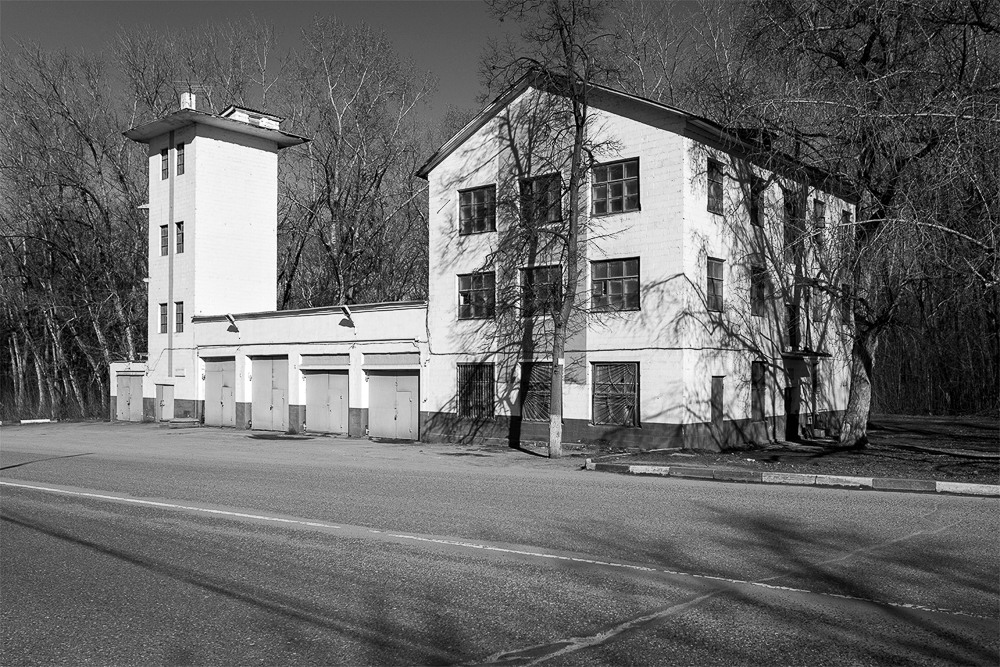
The Fire Station in Kolomna ©Natalia Melikova The Constructivist Project, sadly demolished in 2019
What photographic equipment do you use?
I have been using Canon cameras since I first got into photography. Now I am using a Mark IV with a 17-40mm lens most often. I have a 24mm tilt shift which I’m excited to use. For my thesis project, I shot on a Nikon FM2 and Pentax 6×7. I miss shooting film, some of my favorite photos that I took of Constructivist architecture were done on film so I hope to get back to it one of these days. And I mainly use my iPhone for The Constructivist Project on Instagram.
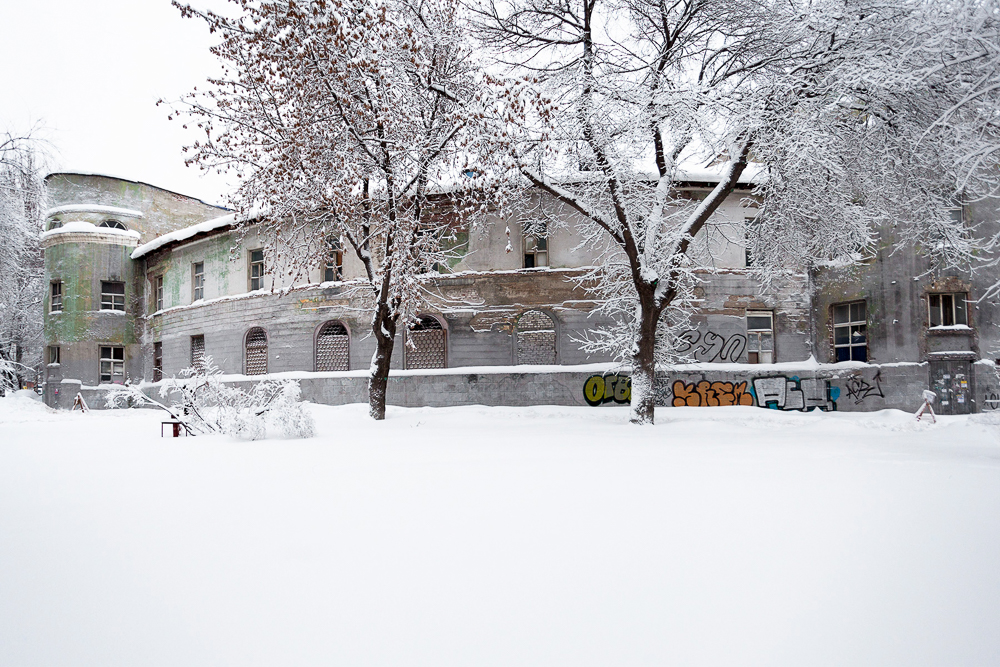
Ekaterina Maximova’s 1931 Hammer and Sickle Factory in Samara ©Natalia Melikova The Constructivist Project
What’s your favourite coffee shop and restaurant in Moscow?
I like going to OMG Coffee. It’s in my neighbourhood, in the Arma business quarter by the Kursky railway station. The coffee is good there and so is the location: originally the Moscow Gas Plant, it is now one of many such industrial areas that have been converted to a commercial development / art / food scene. As for restaurants, hands down, Georgian food is my favourite. There’s too many to name, but a classic is Chito-Ra, a stone’s throw from Arma.

Activist and advocate for protecting and celebrating the heritage of Constructivism, Natalia Melikova ©Natalia Melikova
Your taste in music?
I think like most people, I like a bit of everything. For editing photos, for example, I find myself listening to variations of synthwave, it’s good for keeping an upbeat work rhythm.
Favourite dish?
Definitely on the list of favourites is khachapuri. It’s a Georgian dish, you can’t go wrong with hot bread topped with melted cheese.
You have to visit Natalia’s The Constructivist Project
And follow Natalia on Instagram @theconstructivistproject




